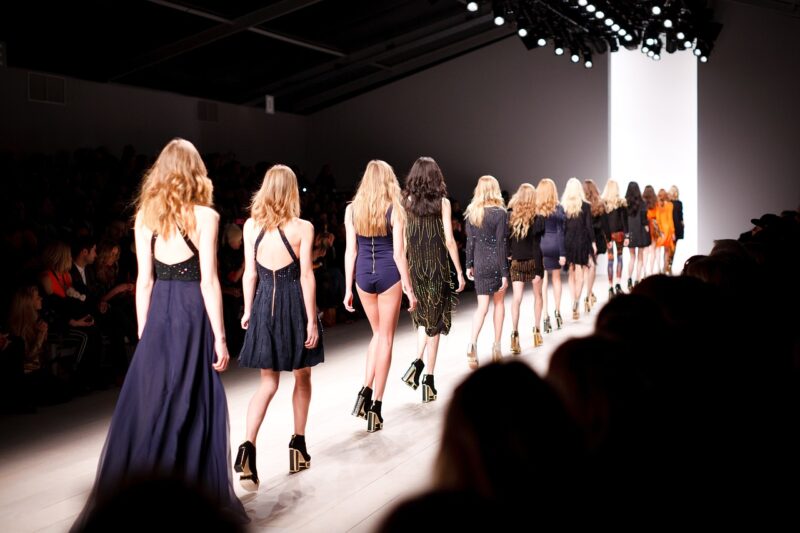How the Fashion Industry Evolved From Functional Clothing to High Art
November 18, 2024

Fashion is not merely a series of garments worn for practical purposes; it has transformed into a multifaceted art form that influences culture, economy, and personal expression. The journey of fashion, from utility-focused clothing to the intricate works of art seen on runways today, encapsulates the evolution of society itself. In this detailed exploration, we will trace this transformation and understand how the fashion industry became synonymous with high art.
1. The Birth of Functional Clothing
In ancient civilizations, clothing was primarily functional. Early garments were created from available materials such as animal hides, woven textiles, and plant fibers. For instance, the Egyptians used linen, while the advent of wool led to significant changes in garment construction and utility in colder climates. These early fashions were not about aesthetics but about survival and societal roles.
Functional clothing served various purposes:
- Protection: Early clothing provided essential protection against environmental elements.
- Social Status: The type of fabric and style often indicated one’s social standing.
- Occupational Roles: Certain garments were tailored for specific professions, aiding functionality and mobility.
These early garments laid the groundwork for what would later evolve into complex fashion systems.
2. The Industrial Revolution: A Turning Point
The 18th and 19th centuries marked a turning point due to the Industrial Revolution. Mass production techniques revolutionized the fashion industry, making clothing accessible to a wider audience. Technologies such as the sewing machine allowed for faster production and the introduction of ready-to-wear clothing.
Key developments included:
- Textile Innovations: Synthetic fibers introduced new designs that were previously impossible.
- Fashion Magazines: The rise of publications began directing public taste towards stylish interpretations of clothing.
- Consumer Demand: An increasing middle class meant more consumers focused on both functionality and style.
Consequently, garments started to reflect personal style, leading to the early thrum of fashionable identity.
3. The 20th Century: Fashion as Art
As society advanced into the 20th century, fashion began to shift from mere functionality towards an exquisite art form. Influential designers such as Coco Chanel and Dior transformed the fashion landscape by introducing bold, artistic elements embedded within their collections.
Several factors contributed to this artistic evolution:
- Art Movements: The influence of art movements like Cubism and Surrealism inspired designers to create garments that were both innovative and message-driven.
- Cultural Narratives: Fashion began expressing cultural identity and societal issues, with garments serving as reflections of historical moments.
- Runway Shows: Live displays of fashion became theatrical, showcasing not just clothing but entire concepts and narratives.
The line between fashion and fine art blurred, with designers considering their work as a form of expression rather than just economic commerce.
4. The Globalization of Fashion
In the late 20th and early 21st centuries, fashion’s globalization further elevated its status as an art form. New markets emerged, and international fashion weeks became pivotal in showcasing artistic garments.
Key elements of globalization in fashion include:
- Cross-Cultural Influences: Designers began to blend various cultural aesthetics and techniques into their collections, enriching the narrative of contemporary fashion.
- Digital Revolution: The rise of internet and social media transformed the way fashion is marketed and consumed, allowing artists to reach global audiences without traditional gatekeepers.
- Sustainability: Increasing awareness of environmental issues encouraged designers to use sustainable materials, fostering a new kind of artistry focused on responsibility.
Fashion has now transcended borders, and designers draw inspiration from around the world, making each collection a unique representation of a global story.
5. Contemporary Fashion: A Canvas for Expression
Today, contemporary fashion stands as a testament to the intricate dance between art and commercialism. High fashion houses create not only for aesthetic appreciation but also to convey socio-political messages. The fashion runway has evolved into a stage for artistic expression, celebrating diversity, identity, and self-expression.
Important trends highlighting this evolution include:
- Fashion as Activism: Issues such as feminism, racial inclusivity, and environmental sustainability often take center stage in fashion shows, turning catwalks into platforms for advocacy.
- Inclusivity: The fashion world increasingly embraces models of all shapes, sizes, and identities, making way for broader representation in art.
- Art Collaborations: Designers frequently collaborate with visual artists or musicians, creating collections that blur the lines between disciplines.
This convergence of art and fashion speaks to the heart of modern society and its complexities, helping to define cultural narratives in compelling ways.
Conclusion
From functional beginnings to contemporary high art, fashion has continuously evolved, mirroring changes in society, culture, and technology. It is now more than just clothing; it is a vibrant expression of identity, creativity, and artistry. The evolution reminds us that what we wear is not only a matter of personal choice but also a reflection of the world around us. As we look to the future, the fashion industry stands poised to continue its transformation, combining functionality with artistry in ever-changing ways. Whether for personal expression or broader societal commentary, fashion remains a defining element of our lives, impacting every individual and community.






